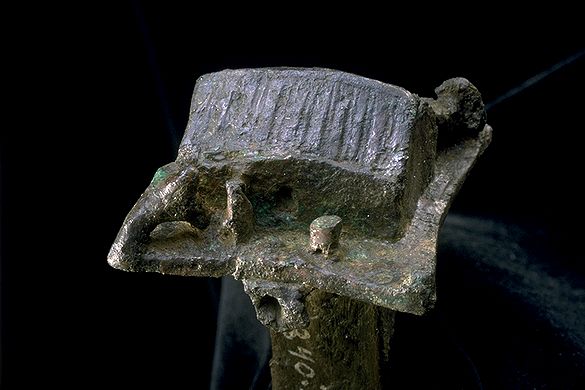The technical issues may include these:
1. casting-on bronze onto iron done simply could cause failure of the iron due to embrittlement by high levels of copper in iron depending on levels of carbon
2. problems with wetting
3. problems with differences in thermal expansion upon cooling.
I may be off-base on some of these, since my metallurgy is a little 'rusty' (pun intended).
Many of these staffs ended up in cremations and are often found broken at the point of casting. The heat of the cremation pyre would allow the migration of copper atoms into the iron and time for carbides to form.
I have not been able to examine the staffs directly yet, but my first guess about the casting process are that possibly an interlayer of tin or silver was used to address failure issues?
Anyone have other ideas? Maybe some experience from similar designs in weapons?

Close-up of top of Klinta staff